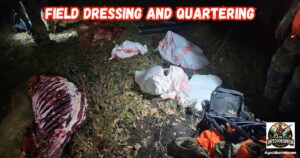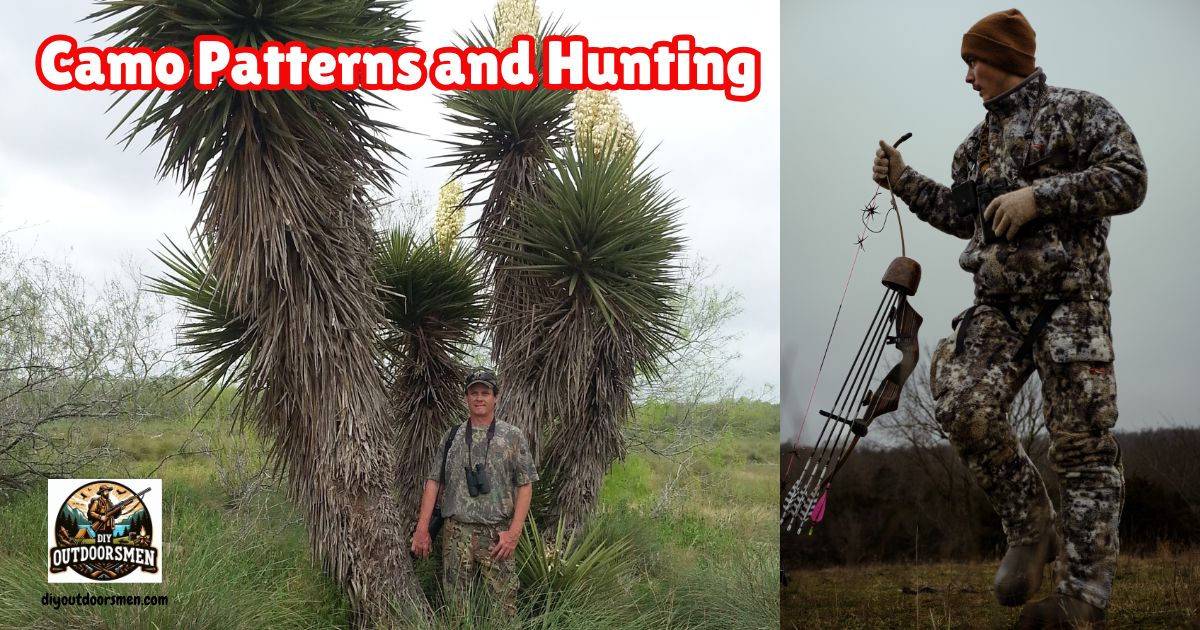Contents
- 1 How Deer See Their Environment
- 2 How Camouflage Patterns Are Designed for Deer
- 3 Matching Camouflage to the Right Hunting Environment
- 4 Common Challenges and Mistakes with Camouflage
- 5 Practical Tips for Choosing Camouflage
- 6 Real-World Impact: How Science-Backed Camouflage Helps Hunters Succeed
- 7 Frequently Asked Questions About Deer Hunting Camouflage
- 8 Find Your Perfect Camouflage
Understanding how camouflage works for deer hunting can make a big difference in your time outdoors. The idea might seem simple at first: blend in so you won’t be seen. Still, the science behind choosing, wearing, and using the right pattern goes much deeper.
QUICK LOOK: Tips for Choosing a Camouflage Pattern
- Check the season and setting: Look at the forest, field, or brush you’ll be hunting. Match your camo to the general color and texture.
- Wash with care: Use detergents made for hunters to avoid the UV-glow problem and cut down scents that could tip off deer.
- Limit your movement: Even with the best camo, stillness makes the most difference. Only move when a deer isn’t looking your way.
- Build layers with quiet fabric: Choose clothes that won’t rustle. Wool blends or soft synthetics are usually quieter than hard nylon or plastic blends.
- Don’t forget safety: Always wear blaze orange when required. In my experience, deer don’t see it like I do, and safety matters more than perfect cover.
If you want to get closer to deer and improve your chances, knowing how deer see the world is really important. In this article, I’ll break down the science behind camouflage patterns and share what I’ve learned over years of hunting and researching these topics.
How Deer See Their Environment
Deer have a view of the world that’s very different from mine. The way they process colors, movement, and shapes means that what looks hidden to me might stick out to a deer. I used to think any earthy pattern would do the trick until I realized how deer vision works.
Deer have what’s called dichromatic vision. This means they only have two types of color-detecting cells in their eyes, compared to the three that humans have. As a result, deer don’t see reds and oranges as I do. Those colors show up for them as muted yellowish or brown tones, making the reds in my flannel jacket stand out less than I originally thought.
On the other hand, they can see greens and blues more clearly. That’s why blue jeans can pop out in the woods, even more than some lighter browns. Deer also have excellent vision in low light. Thanks to their abundance of rod cells, they see really well at dawn and dusk. I always need a flashlight at those times, but deer are right at home. They’re also sensitive to ultraviolet (UV) light.
Unlike me, deer do not have a UV filter over their eyes. Some fabrics, especially those washed with standard laundry detergent that contains optical brighteners, can actually glow to a deer even though they look dull to me. This realization made me rethink the kind of detergent I use for my hunting gear.
Their eyes are set on the sides of their head, which gives them a panoramic field of vision—nearly 310 degrees—helping them spot movement quickly. Deer process visual information faster than I do. If I shift or turn, even slowly, there’s a good chance a deer will notice first.
What many hunters find surprising is that a deer’s eyesight isn’t very sharp. One study compared deer vision to 20/20 human vision and found deer see at about 20/60. That means a deer has to be much closer to spot fine details. They rely less on sharp sight and more on noticing movement and broken outlines.
How Camouflage Patterns Are Designed for Deer
Years ago, camouflage was mostly about looking like leaves or bark to my eyes. Modern patterns focus less on making me look like a tree and more on breaking up my body shape so a deer struggles to notice my outline. There’s a lot of research that goes into getting this right.
Disruptive coloration is the main idea behind effective camouflage for deer hunting. Rather than simply copying nature, disruptive patterns use contrasting patches, some big, some small, to blur the boundaries of my body. This makes it tough for deer to figure out where I start and the background stops.
- Macropatterns: These are the large blocks of contrasting color. They work best when I hunt from farther away, helping my silhouette disappear into the mix of branches, trunks, or open sky.
- Micropatterns: These are the smaller details, helping the pattern work even if a deer gets close. They break up edges and add depth, making it harder for a deer to get a fix on my form.
UV reflection is another important component. Camouflage companies use dyes and finishes that absorb UV light instead of reflecting it. I make sure to wash my clothes with special detergents that don’t add optical brighteners. This simple step keeps my clothes from glowing, which would otherwise make me stick out at dawn, dusk, or under a full moon.
The color choices in camo patterns are based on deer vision, not mine. The best patterns rely on earth tones—greens, grays, browns. They avoid too much blue or yellow, colors that deer pick up easily. Blaze orange, the safety color required in many states, looks bright and impossible to miss to me, but to a deer, it registers as a muted yellow-gray and doesn’t make me more visible if the pattern still breaks up my outline.
Some fabrics do an even better job by diffusing and absorbing light rather than reflecting it. Textures that look and feel dull, like soft brushed cotton or wool blends, avoid shine and glare that deer pick up. Hard, shiny fabrics risk catching stray rays of light and giving away my spot.
Matching Camouflage to the Right Hunting Environment
One of the most important lessons I learned through trial and error is that not all camouflage works in every place. The woods in early fall look very different from the bare forests of late season or grassy farmland edges. Companies produce different patterns for specific situations, and it makes sense from a scientific point of view.
Elevated patterns are built for hunters sitting in treestands. These designs use chunks of brighter color and shadow to mimic the mix of bark, sky, and leaves seen from above. When I hunt on the ground in thick brush, I prefer subalpine or ground-level patterns that use smaller, more varied bursts of color to blend in with fallen branches, grass, and dirt. Wearing the right camo helps me appear less like a moving object and more like a patch of scenery.
Camouflage effectiveness also changes with the time of year. Early in the season, green leaves and new growth call for greener patterns. Late in the year, as trees lose leaves and the ground turns brown and gray, I switch to patterns with duller, neutral tones. This seasonal strategy has helped me get close shots I’d never have had if I wore the wrong camo.
Common Challenges and Mistakes with Camouflage
I’ve had my share of times when deer spotted me, even in full camo. After enough trial and error, I found some common pitfalls that can work against even the best camouflage. Movement is the biggest giveaway. Even perfectly matched camo won’t help if I shift suddenly or stand up at the wrong time. Deer notice subtle shifts much faster than I expected when I started hunting.
UV-glow is another issue. Many hunters don’t realize their clothes glow like a spotlight under UV light if washed with regular detergents. Swapping to hunting-specific detergents helps reduce this risk.
Wearing the wrong pattern for conditions can also be a problem. I once wore leafy green camo in late November, only to stand out against a backdrop of bare gray woods. Now, I match my gear to whatever the forest floor and skyline look like from a distance, not just what’s close.
Sound is another challenge. Some fabrics crinkle or rustle as I move. Deer hear well and may notice me simply by listening for noises that don’t belong.
Managing Scent and Sound
Besides what I wear, managing my scent and the sound I make matters a lot. While scent control isn’t part of camouflage patterns, it works hand in hand with visual hiding. I use unscented detergents and sprays, and am always careful not to brush against branches or leaves loudly, especially near where I think deer are hiding.
Practical Tips for Choosing Camouflage
With all these factors in mind, I keep a few simple strategies for choosing and caring for my hunting clothes:
- Check the season and setting: Look at the forest, field, or brush you’ll be hunting. Match your camo to the general color and texture.
- Wash with care: Use detergents made for hunters to avoid the UV-glow problem and cut down scents that could tip off deer.
- Limit your movement: Even with the best camo, stillness makes the most difference. Only move when a deer isn’t looking your way.
- Build layers with quiet fabric: Choose clothes that won’t rustle. Wool blends or soft synthetics are usually quieter than hard nylon or plastic blends.
- Don’t forget safety: Always wear blaze orange when required. In my experience, deer don’t see it like I do, and safety matters more than perfect cover.
Real-World Impact: How Science-Backed Camouflage Helps Hunters Succeed
Putting this science to use has helped me see more deer at closer range, make better shots, and feel more confident out in the woods. I’ve watched deer walk by at less than ten yards, completely clueless, when I used camo that matched the setting, stayed absolutely still, and managed my scent. The opposite happened when I ignored one of these details. Deer are wired for survival, and any edge I get helps.
- Tree Stand Hunting: Elevated camouflage mixed with sky and bark colors blends in best with the treetop environment.
- Brush and Grassland Hunting: Ground-level patterns with more browns and yellows blend into tall grass or crop stubble.
- Winter Woods: Camo with more gray and white covers better after leaf drop and during snow.
Applying these facts in the field makes hunting both more ethical and enjoyable for me. My close calls and successful outings confirm that using camo built from science isn’t overhyped. It works when all the puzzle pieces fit—pattern, movement discipline, and scent control.
Frequently Asked Questions About Deer Hunting Camouflage
Here are some questions I often get from new hunters about camouflage patterns and putting them to work:
Will blaze orange ruin my camouflage?
No, blaze orange still hides your shape to a deer if you use camo patterns with it. Deer see blaze orange as a pale yellow or brown, not a stark color like I do.
What happens if I wear blue jeans or bright clothes?
Blue and bright colors can make you stand out to deer, especially in certain light. Wearing clothes treated for hunting and focusing on earth tones make it harder for deer to spot you.
Do high-tech camo patterns make that much difference?
Patterns built with a real understanding of deer vision have a noticeable impact. The difference is clearest when deer are close or the background is tricky.
Is scent or camouflage more important?
Both matter a lot. I combine visual camouflage with scent control for my best odds at getting close.
Find Your Perfect Camouflage
I hope this guide helps you make smart choices the next time you’re gearing up for deer season. Science, experience, and a little planning all go a long way in helping you blend in and get closer to deer.
As always, stay safe, enjoy the journey, and please try to leave it cleaner than you found it. If you have any comments, questions, ideas, or suggestions, please leave them in the comment section below, and I’ll get back to you ASAP. You can follow us on YouTube: Man Art Creations for videos of our DIY Adventures.
Most Recent Articles:
- Complete Guide On Tracking Game Animals

- DIY 4-Step Guide To Field Dressing And Quartering A Deer

- Night Vision Binoculars For Nocturnal Hunting

- The Science Behind Camouflage Patterns For Deer Hunting

- Binocular Accessories For Hunters

- 9 Tips for Using Trail Cameras To Track Deer Movements

P.S. Thanks so much for checking out our blog; we really appreciate it. Just so you know, we may receive a commission if you click on some of the links that appear on our site. This helps us keep our content free and up-to-date for everyone. We appreciate your support!



